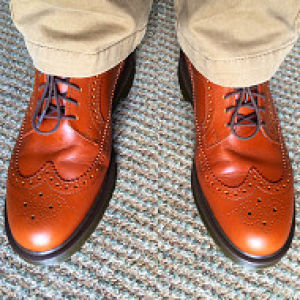A Dinosaur in the Park
The Maidenhair Tree, Ginkgo biloba, is the only living species in the division Ginkgophyta, all others being extinct. This species can be traced back to fossils which are 270 million years old. Ginkgo fossils are common in the rocks of the Jurassic and Cretaceous and were therefore probably eaten by dinosaurs. Native to China, Ginkgo biloba is planted widely as an ornamental tree. Bartheletia paradoxa is a fungus which grows only on the fallen leaves of Ginkgo biloba. In autumn dark pustules of thick-walled resting spores (teliospores) form on the surface of the leaves and these germinate after a resting period of a year. Since this species only occurs on Ginkgo biloba, it has presumably evolved along with it and therefore, was presumably eaten by the dinosaurs. This unusual fungus also occupies a unique taxonomic position, along with its host species, a living dinosaur.
Information from:
Scheuer, C., Bauer, R., Lutz, M., Stabentheiner, E., & Grube, M. (2008). Bartheletia paradoxa is a living fossil on Ginkgo leaf litter with a unique septal structure in the Basidiomycota. Mycological research, 112(11), 1265-1279.
http://www.sciencedirect.com/science/article/pii/S0953756208001585
Top left: Ginkgo biloba leaf with groups of telia. Note the grey/brown halo around the blackish groups of telia.
Top right, bottom left: Clumps of telia on the surface of the leaf.
Bottom right: Solitary teliospores in the leaf tissue, stained with PlaqSearch.
- 8
- 0

Comments
Sign in or get an account to comment.


